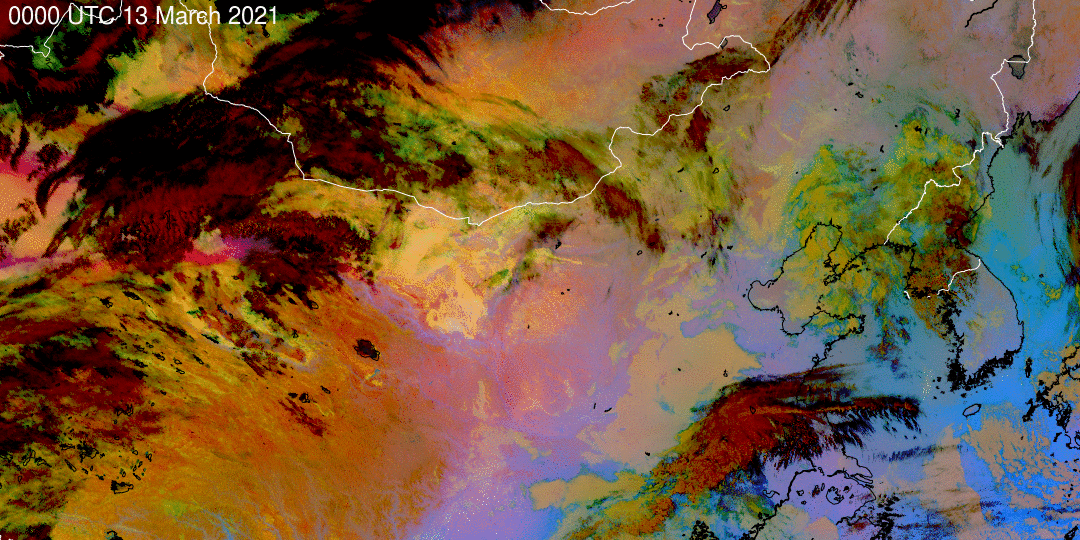
[ Archive ]

 |
CIMSS-NOAA Weekly Report [ Archive ] |
 |
CIMSS AND ASPB WEEKLY HIGHLIGHTS FOR THE WEEK ENDING MARCH 19, 2021
PRODUCTS AND APPLICATIONS:
AWARDS AND RECOGNITION:
PUBLICATIONS:
WORKSHOPS, CONFERENCES, AND MEETINGS:
CIMSS Flash Talk Social : NOAA’s Cooperative Institute for Meteorological Satellite Studies (CIMSS) held a final round of informal on-line science talks on Wednesday March 17th featuring four virtual presentations on projects underway while working remotely. Topics included: GOES ABI and Deep Learning to Nowcast Lightning, Tropospheric Moisture Retrievals via VIIRS and CrIS Data Fusion, the CSPP GeoSphere platform for viewing GOES-16 data, and an analysis of NWS Weather Tweets. The well-attended event topped off a year of similar gatherings to help offset workplace isolation during the pandemic. A recording is available at https://cimss.ssec.wisc.edu/education/flashtalks/. (M. Mooney, CIMSS, margaret.mooney@ssec.wisc.edu, S. Lindstrom, CIMSS)
TRAINING AND EDUCATION:
MEDIA AND OUTREACH:
Lake-Effect Snow Outreach Session: Claire Pettersen (Cooperative Institute for Meteorological Satellite Studies, CIMSS) and Mark Kulie (NOAA/NESDIS/STAR/ASPB) gave a virtual presentation about lake-effect snow as part of the Michigan Sea Grant Upper Peninsula Spring Seminar Series. They provided background information about lake-effect snow formation mechanisms and variability throughout the Great Lakes, demonstrated how various NOAA remote sensing assets are used to monitor lake-effect snow, and highlighted ongoing snow-related research activities in collaboration with the Marquette, MI National Weather Service Weather Forecast Office. The talk attracted about 30 people who all connected virtually and interacted with the speakers during a lively question and answer session. Further information about this seminar series can be found at the following web link: https://www.canr.msu.edu/events/u-p-spring-seminar-series-2021. (M. Kulie, E/RA2, 608-263-6583, mark.kulie@noaa.gov)
SSEC and CIMSS Scientists in the News: Scientists at the University of Wisconsin-Madison (UW) Space Science and Engineering Center (SSEC) and the Cooperative Institute for Meteorological Satellite Studies (CIMSS) provide expert interviews, imagery and case studies to promote science. This week: 1) CIMSS Satellite Blog contributors Scott Bachmeier and Scott Lindstrom published case studies on "Severe weather outbreak in the Deep South" (Mar. 17), "Monitoring severe weather as it happens" (Mar. 17), "Sandstorm hits Beijing, China" (Mar. 16), "Monitoring dry air with NUCAPS in advance of a storm" (Mar. 15), "Severe weather and blowing dust across the southern High Plains" (Mar. 13-15), "The moving shadow of Denali" (Mar. 12), and "Using NUCAPS data to judge model performance before a storm" (Mar. 12). Read more: https://cimss.ssec.wisc.edu/satellite-blog/. (J. Phillips, SSEC, 608-262-8164, S. Bachmeier, CIMSS, S. Lindstrom, CIMSS)
 (Click image to enlarge)
(Click image to enlarge)
Figure: 1-minute GOES-16 visible images include time-matched SPC Storm Reports that were produced by supercell thunderstorms across Mississippi and Alabama on Mar. 17, 2021. Read more: https://cimss.ssec.wisc.edu/satellite-blog/archives/40293. Credit: CIMSS.
 (Click image to enlarge)
(Click image to enlarge)
Figure: Himawari-8 animation of a sandstorm that hit Beijing, China on Mar. 15, 2021 resulting in hazardous air quality in the city and surrounding areas. Read more: https://cimss.ssec.wisc.edu/satellite-blog/archives/40262. Credit: Japan Meteorological Agency, CIMSS.
OTHER:
| Archived Weeklies Page | Submit a report item |